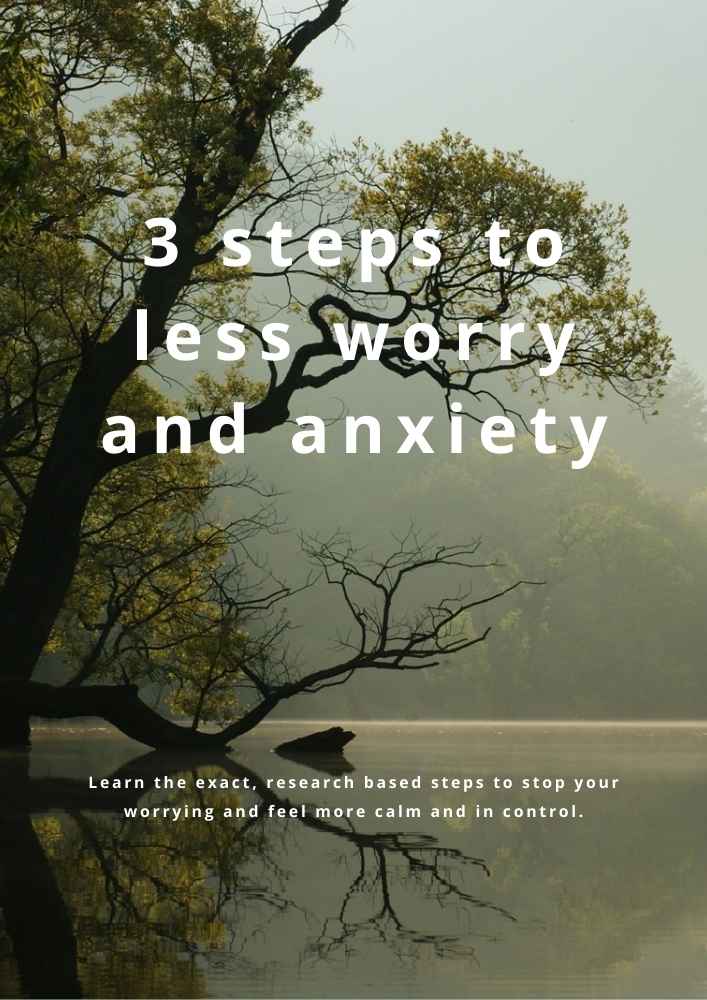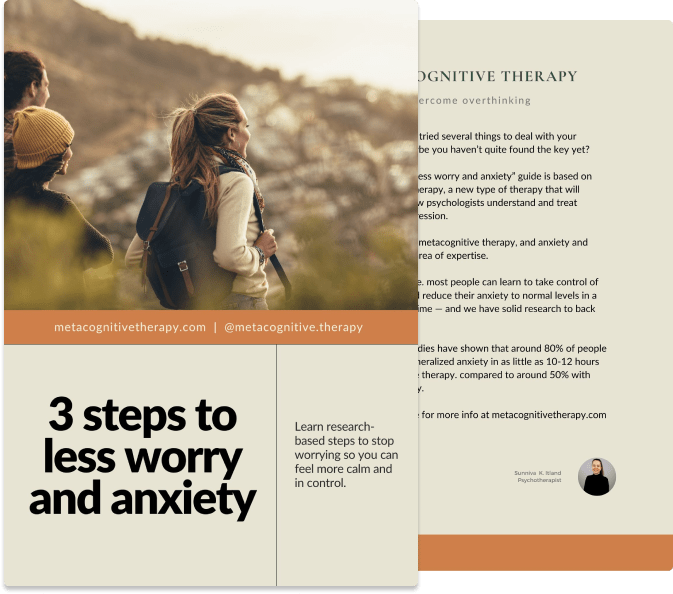Your burnout isn't just work stress — here's what really causes it

Download our best tips on reducing anxiety and worrying
Learn three powerful metacognitive therapy steps to stop the worry cycle, reduce anxiety, and feel calmer in everyday life.
.jpeg)
.jpeg)
Are we approaching burnout all wrong? For decades, it’s been reported that burnout is primarily a result of work-related stress, demanding hours, and minimal work-life balance. But emerging research challenges this assumption.
It turns out, burnout may have less to do with your job and more to do with how you handle negative thoughts and feelings. Recent studies show that burnout is more linked to depressive stress in your personal life than to work conditions. Of course, genuinely toxic work environments shouldn’t be ignored, and any situation involving impossible demands, consistently excessive hours or bullying should be addressed.
But these new studies do suggest that many people experiencing burnout can find relief by changing how they process their thoughts and emotions. That’s where Metacognitive Therapy (MCT) comes in.
How fear fuels stress and burnout
Burnout manifests as extreme physical, emotional, and mental exhaustion. People with burnout often describe feeling empty, unmotivated, and overwhelmed, while they struggle with concentration, memory issues, and irritability. Even normal levels of stress can become daunting.
The problem is, traditional burnout treatment advice creates a secondary problem that exacerbates the burnout: a fear of stress itself. When we’re repeatedly told that the only way to feel better is to rest and avoid stress, we can ultimately develop a stress phobia. People become terrified of feeling tired or pressured… but a certain degree of stress and fatigue is a normal part of being human.
This fear creates a vicious cycle: When someone inevitably feels some stress or fatigue from normal activities, they believe they haven’t recovered from burnout, and they retreat back into rest and avoidance. This pattern actually makes them less resilient to stress over time.

Download our best tips on reducing anxiety and worrying
Learn three powerful metacognitive therapy steps to stop the worry cycle, reduce anxiety, and feel calmer in everyday life.
The destructive cycle of avoidance
This common approach to burnout recovery — where people withdraw from work, social activities, and the hobbies that brought them joy — often inadvertently maintains the problem. When we avoid any activities that might make us tired or stressed, that withdrawal leads to increasing isolation and hyperawareness of symptoms. People can spend a lot of time monitoring their stress levels and ruminating on whether they'll recover. This constant focus on symptoms actually amplifies them, because when we’re always monitoring for signs of stress or exhaustion, we’ll find what we’re looking for.
The strategies meant to heal burnout often perpetuate it.
The Metacognitive Therapy approach
Metacognitive Therapy offers a completely different approach by addressing the root thought patterns and responses that prolong burnout, instead of fixating on the symptoms.
MCT helps people recognize the impact of their current coping strategies, and how worrying and rumination about their symptoms actually increases their stress and anxiety rather than improving it. They realize that constant symptom-monitoring makes those symptoms feel more prominent, and withdrawing from positive activities just reduces their motivation and energy levels.
Practical steps to recovery
Metacognitive Therapy treatment typically starts with reducing worry and rumination, and re-engaging in your life with these steps:
- Worry postponement: Rather than trying to eliminate negative thoughts, postpone worrying and analyzing them until a later time. You can set a specific worry time (30 minutes after dinner, for example), but people often find they don’t need to use that time once they arrive at their “worry window”. This shows you worry is controllable, and that negative thoughts and feelings can fade on their own, if you let them.
- Reintroduce positive activities: You can expect that returning to normal activities might initially cause some stress, or that you tire out more easily. That’s completely normal, and not necessarily a sign of burnout relapse. MCT encourages you to gradually stop avoiding these activities and see what happens when you don't overly monitor or worry about your tiredness.
- A gradual return to work: Plan for a gradual but realistic return to work. Some people start with half days, knowing that they may feel somewhat anxious or tired initially. The key is learning to leave these feelings alone rather than interpreting them as danger signals.
The real life recovery stories we’ve witnessed at our clinic have been remarkable. One person who previously would stay in bed for days whenever burnout symptoms cropped up, experimented with gradually reducing his resting time and continued with his daily activities despite occasional uncomfortable symptoms. His tiredness normalized as he increased his activity levels and stopped overthinking burnout. Now, he doesn’t view fleeting feelings or symptoms as a threat, and has taken up work, old hobbies, and projects again.
The root cause of burnout
Many burnout cases actually begin with overthinking a specific problem, either at work or in your personal life. This rumination can lead to anxiety, low mood, low energy, sleep difficulties, and concentration problems, which then become new sources of worry that can manifest in more symptoms. Understanding this cycle is key for burnout recovery.
Burnout often isn't caused by external circumstances, but by our internal response to them. With these shifts, you can experience lasting recovery and a path back to an engaged, fulfilling life.
If you feel stuck in a cycle of worry, you can check out this helpful article on 7 tips to stop worrying.



